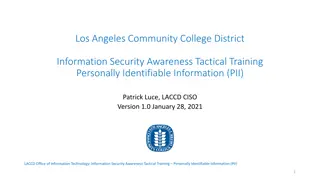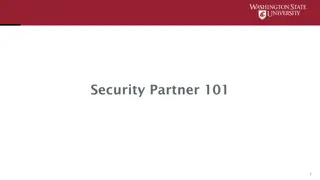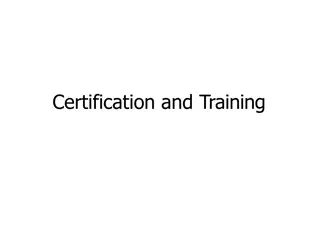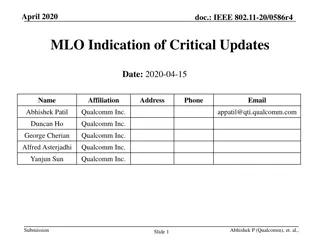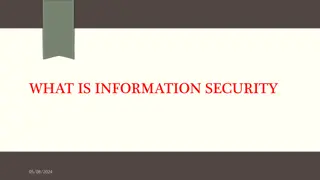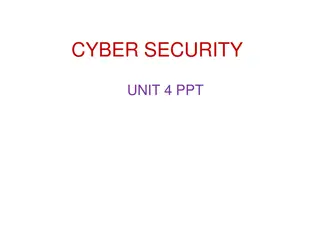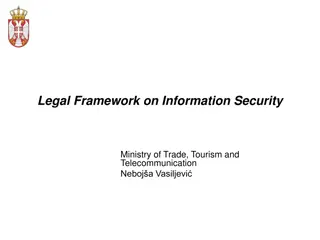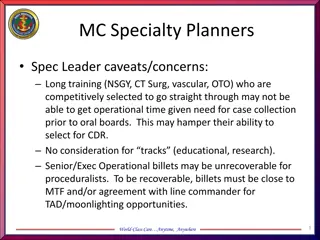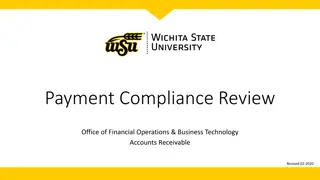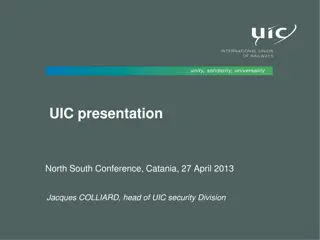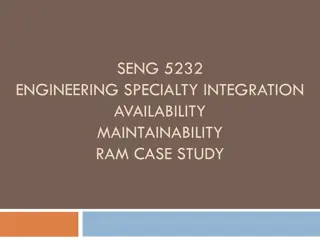Enhancing Operational Security: Protecting Critical Information
Introduction to Operational Security (OPSEC) and its importance in safeguarding critical information from adversaries. The process involves identifying, analyzing threats and vulnerabilities, conducting risk assessments, and applying appropriate OPSEC measures. Loose Lips Sink Ships emphasizes regulating information flow in the digital age. The OPSEC process is detailed through steps such as identifying critical information, analyzing threats, vulnerabilities, and assessing risks for effective protection.
Download Presentation

Please find below an Image/Link to download the presentation.
The content on the website is provided AS IS for your information and personal use only. It may not be sold, licensed, or shared on other websites without obtaining consent from the author.If you encounter any issues during the download, it is possible that the publisher has removed the file from their server.
You are allowed to download the files provided on this website for personal or commercial use, subject to the condition that they are used lawfully. All files are the property of their respective owners.
The content on the website is provided AS IS for your information and personal use only. It may not be sold, licensed, or shared on other websites without obtaining consent from the author.
E N D
Presentation Transcript
Learning Topics Introduction Critical Information Threat OPSSEC measures What to look for Identifying threats
Introduction Operations security (OPSEC) is a process that identifies critical information to determine if: friendly actions can be observed by adversary intelligence systems information obtained by adversaries could be interpreted to be useful to them, and then executes selected measures that eliminate or reduce adversary exploitation of friendly critical information
Importance Loose Lips Sink Ships Any priority information that could be useful to the enemy needs to be regulated In this new technological era, information can pass by the click of a button
Process Operational security is broken down into the following five step process Step 1 Identify Critical Information Step 2 Analyze Threats Step 3 Analyze Vulnerabilities Step 4 Risk Assessment Step 5 Apply Appropriate OPSEC Measures
1. Identification Critical Information Identifying information needed by an adversary, which focuses the remainder of the OPSEC process on protecting vital information, rather than attempting to protect all classified or sensitive unclassified information
2. Analysis of Threats Analysis of Threats: the research and analysis of intelligence, counterintelligence, and open source information to identify likely adversaries and/or planned operations
3. Analysis of Vulnerabilities Examining each aspect of the planned operation to identify OPSEC indicators that could reveal critical information and then comparing those indicators with the adversary s intelligence collection capabilities identified in the previous action
4. Assessment of Risk First, planners analyze the vulnerabilities identified in the previous action and identify possible OPSEC measures for each vulnerability Second, specific OPSEC measures are selected for execution based upon a risk assessment done by the commander and staff
5. Application of Appropriate OPSEC Measures The command implements the OPSEC measures selected in the assessment of risk action or, in the case of planned future operations and activities, includes the measures in specific OPSEC plans
Need To Know It is possible and not unprecedented for spouses and family members of US military personnel to be targeted for intelligence collection When being deployed do not give out any critical information that the enemy could use against you
Types of Information Examples of Critical Information The following examples may help you in defining parameters for your communications. It is important to remember that there are many more examples than those listed below: 1. Detailed information about the mission of assigned units 2. Details concerning locations and times of unit deployments 3. Personnel transactions that occur in large numbers (e.g., pay information, power of attorney, wills or deployment information) 4. References to trend in unit morale or personnel problems 5. Details concerning security procedures
Identifying Threats In today s society you have to be extremely careful on how your passing information If it is sensitive information you have to make sure you use secure channels
Conclusion Loose Lips Sink Ships Make sure you are passing information the correct way Avoid posting critical information to social media sights Avoid the use of cell phones and emails for passing critical information Do not even pass critical information to your family
Resources Operational Security http://www.marines.mil/unit/13thmeu/Pages/Operationa lSecurity.aspx Marine Parents http://www.marineparents.com/deployment/opsec.asp








